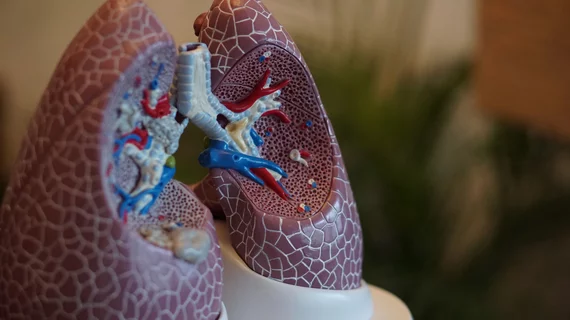Many U.S. lung cancer screening program websites are failing to highlight radiologists’ central role in these lifesaving exams, according to research published Sunday in Clinical Imaging.
The specialty’s duties including interpreting CT images, explaining the results and performing needle biopsies of nodules. Yet, many patients may not be aware of what to expect during screening, nor the radiologist’s place on the care team.
Experts from several prominent institutions recently assessed the online information landscape, incorporating 257 unique lung cancer screening websites. Only 48% mentioned radiology or radiologists, while just 14% featured members of the specialty in images or videos.
“Omission of references to radiologists and failure to highlight the essential roles of radiologists in organizing, executing, and sustaining LCS programs represent an inaccurate portrayal of lung screening services and a missed opportunity to highlight the central role of radiology in patient care,” Brent Little, MD, with the Jacksonville-based Mayo Clinic Florida’s Department of Radiology, and co-authors wrote March 13. “While patients and the public often intuitively understand the role of pulmonologists, oncologists, surgeons and others in the LCS team, they often have limited knowledge of the contributions of radiologists to healthcare in general, or appreciation of the special roles of radiologists in LCS,” they added later.
Little and colleagues performed a Google search for their study, targeting terms such as “lung cancer screening” and “low-dose CT.” They also utilized a checklist to look for the same content on each site. Of those that did mention radiologists, the specialty was most frequently acknowledged for its role in reading or interpreting images (35%).
Meanwhile, many failed to make use of multimedia to draw in potential patients. Only 36% of websites included one medical image; 27% used two or more; and 26% offered at least one video. Just 3% offered information in a language other than English, while 15% incorporated patient narratives.
Little et al. believe addressing these deficiencies is crucial as imaging providers strive to bolster screening rates.
“For patients, multimedia content may increase understanding of complex healthcare information that would otherwise be difficult or tedious to comprehend by text alone,” they advised. “This may be especially important for LCS websites, as current and prior smokers may have lower average levels of health literacy than non-smokers and may have little knowledge about LCS at baseline.”

